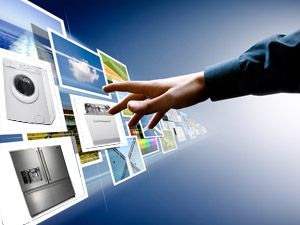Web 3.0 isn’t yet far away. All the big laboratories are working hard to develop new applications concerning the Internet of things. With this neologism has been named the last frontier of online technology. The strength lies in the possibility given to objects to interact with each other by capturing and exchanging information.
The alarm clock may sound for example in advance once found, through the Internet, heavy traffic conditions. And so the refrigerators could buy online the ideal food for our diet, the plants could alert the watering that they need water, the containers of medicines communicate that you forgot to take a pill.
Internet of Things Is Here to Stay
In short, all objects of common use may have access to the network by changing radically our daily life as part of the internet of things revolution. Almost all things will possess its own IP address becoming so connected and traceable. It’s assumed that by 2015, 15 billion devices will be online. Bob Kahn, the man who together with Vinton Cerf, invented in the seventies the data transmission protocol on which is based the Web, is working in the United States in the development of the project.
The goal of the Internet of things is to ensure that the electronic world draw a map of the real world, giving an electronic identity to the things and to the places in the physical environment. In short, the real objects collect environmental data, process them and interact virtually with each other through microantennas 3G, wi-fi and GPS systems. The equipments will also continue to miniaturize themselves reaching the size of the most advanced bugs for fields of application increasingly numerous.
Everything will be smart, from the house to the city. An example will be the urban transport system in London: the sensors of the subway trains will signal to passengers in the carriage where there are empty seats, the parking will be on the network, so as to be sure to find a place before you get into the car, the semaphores will coordinate so as to dispose the traffic effectively.
The fields of application will be numerous: from industrial ones to logistics and information services, energy efficiency, remote service and environmental protection.
The stumbling block is the privacy safeguard. If all our items will be online, track our movements will be very simple, as already happens today with the most modern GPS tracking systems. It will be like wearing 24-24h a surveillance camera. The solution could be the installation of switches, if required, disabling the tracking. But these are still hypotheses, we have to wait at least 2015 in order to begin to feel first hand the pros and cons of this new technology.
